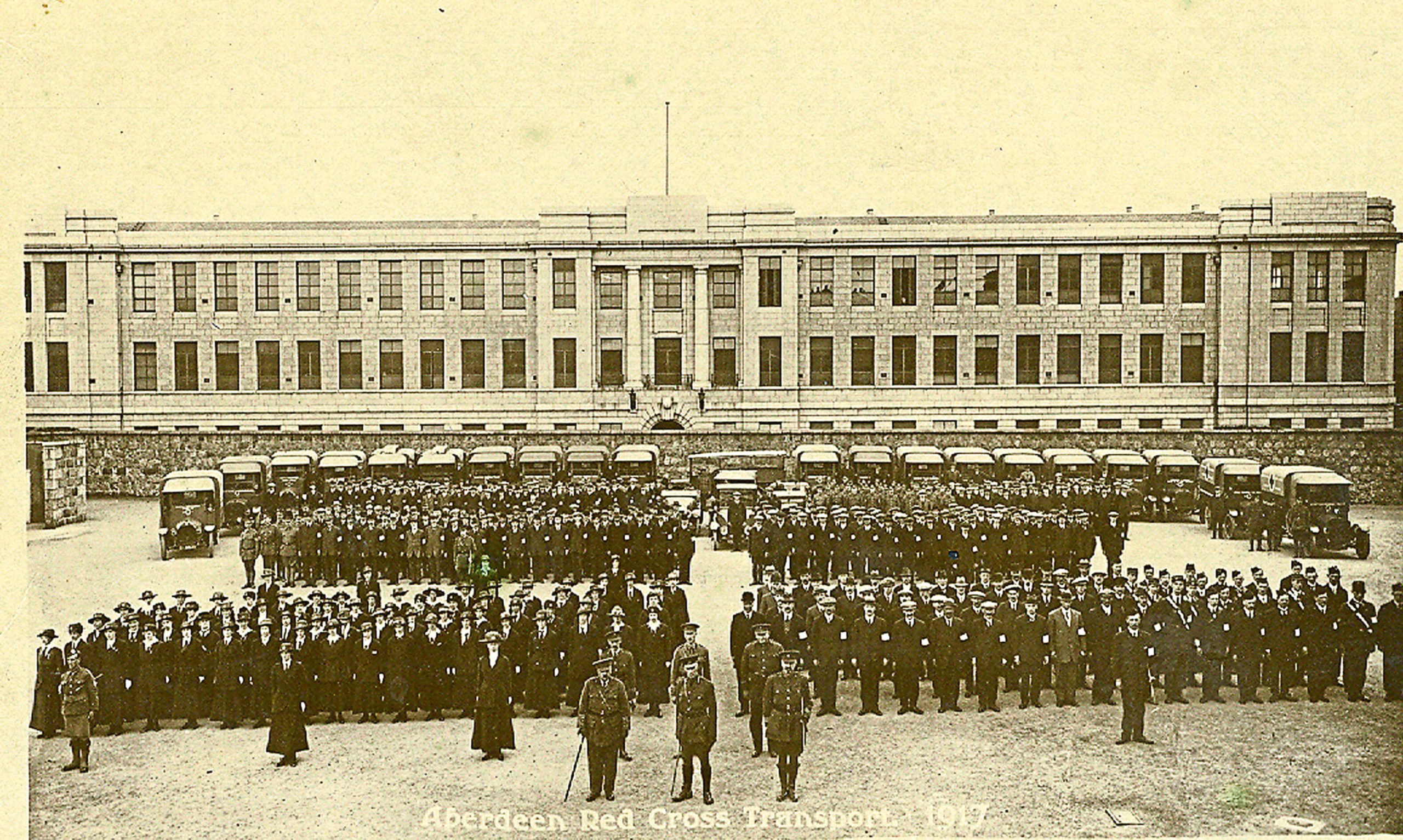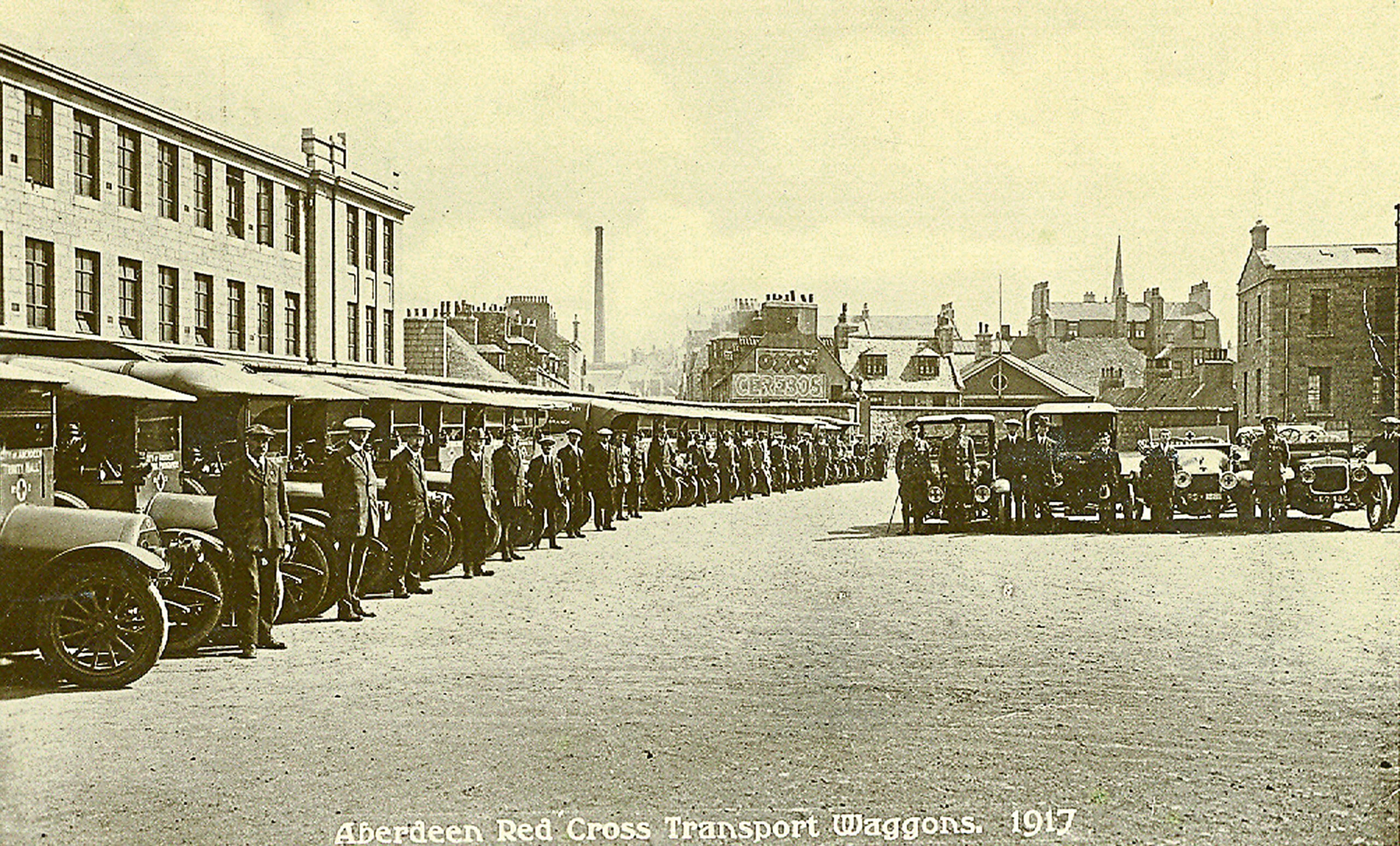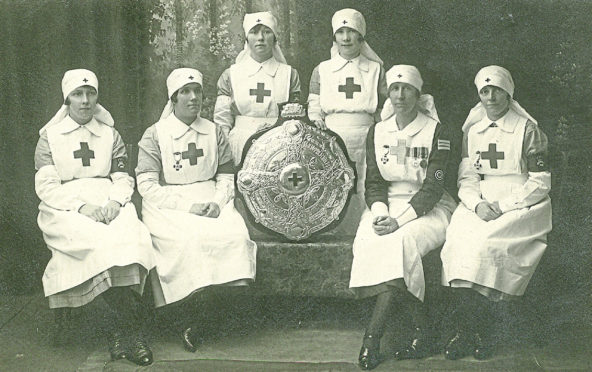Among the many exciting tasks that I undertake as a curator is the responsibility of improving museum catalogue records for objects in the collection.
I recently had the pleasure of looking more closely at the records we hold for these British Red Cross Society photographs.
Following the outbreak of the First World War in 1914, the British Red Cross organised nursing staff in the UK and abroad to support the naval and military forces. Two of the photographs show Aberdeen’s branch of British Red Cross transport in 1917. The third photograph show nurses with a trophy shield.
The records we hold for these photographs have little information. Catalogue improving clues can be revealed on closer inspection.

The nurses wore the iconic blue dress associated with the nursing profession. The long white linen oversleeves reveal the nurse’s position. Commandants wore red dresses and stiff white linen oversleeves. They are shorter than her colleague’s oversleeves.
The nurses display a large silver plate trophy shield with a red enamel cross in the centre. Competitions were held regularly nationwide to test the knowledge of nursing standards. The competitions were used to highlight their expertise and encourage funding from the community.
The commandant and two nurses wear British Red Cross proficiency badges, which were first instituted by the society in 1914. They were awarded to nurses who had obtained the proficiency certificate in first aid, nursing and other subjects.

The commandant displays service medals on her apron. These are a silver British War Medal and a bronze Allied Victory Medal. First World War service medals were awarded to nurses who served abroad during the conflict. The medals were instituted in 1919. The photograph of the nurses with shield was therefore taken after this date.
The Red Cross emblem at the centre front of the nurses’ hats was introduced around 1925. The nurses’ hair styles follow the fashions for the mid-1920s too. They are perfect for slipping a fashionable cloche hat over when their nursing shift ended.
The photographs were catalogued at the same time. Could they have been donated together? There are so many unanswered questions, but it has been interesting reading between the lines to fill in some gaps.
Can you help us? If you know more about these photographs, then let us know at curators@aberdeencity.gov.uk
